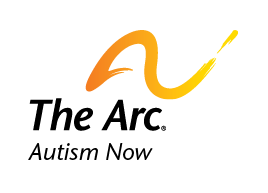What are One-Stop Centers?
One-Stop Centers are federally funded agencies that provide a variety of services to help people with or without disabilities with their training and employment needs. Each state is required to have at least one of these centers located in each local service delivery area. An example of a local service delivery area is a county with a population of 500,000 or more. One-Stop Centers are authorized under the Workforce Investment Act of 1998.
What services do One-Stop Centers provide?
Even if you receive services from another agency, you can still go to a one-stop center and receive core services at no cost including:
- Outreach
- Intake and orientation
- Initial assessment
- Determination of eligibility for additional services
- Job search and placement assistance
- Career counseling, and
- Labor market information
- If individuals have not become successfully employed as a result of core services, intensive services are provided
- either directly by the center or through a contract with a service provider. Examples of intensive services include:
- Comprehensive assessments of skills and service needs
- Development of individual employment plans
- Group and individual counseling, and
- Case management
- Training services are intended for eligible individuals who have not become successfully employed as a result of
- core and intensive services. Types of training include:
- Occupational skills training
- On-the-job training
- Skills upgrading
- Job readiness training
- Adult education and literacy training, and
- Customized training for employers.
If funds for intensive and training services are limited, priority is given to individuals with low incomes, and individuals receiving public assistance; people with disabilities should be among those given priority under these criteria.
Where can I find more information?
You can find the location of your nearest one-stop center by contacting America’s Service Locator from the
U.S. Department of Labor, or toll-free by phone at (877) US2-JOBS, 877-872-5627.
You can also contact your state, county, or local department of labor or employment listed in the
government section of the phone book.
Contact the One-Stop Disability Coordinators in your region. You can get a list of One-Stop Disability
Coordinators on the web.
Additional information on one-stop centers can be found here:
Dept. of Labor Employment and Training Administration
WIA Information
ETA: disAbility Online
ETA: disAbility Online – One-Stop
Tips
- Centers are not typically listed in the phone book as “one-stop centers.” Instead, they go by a variety of
- names depending on the state. Some states use the same name for all centers throughout the state (for
- example in Connecticut, all centers are called “Connecticut Works”), while in other states (such as
- Massachusetts), the name is different in each local area.
- Most of the core services of the centers are designed to be fairly self-directed. This means that you should
- not expect to receive a lot of one-to-one assistance from center staff (although you should never hesitate to
- ask for help if you need it). You can bring someone with you to help if you would like.
- People can use the services of more than one one-stop center if they want. Find out which center has the
- types of free services that you want to use.
- One-stop centers vary in how you initially begin to use the services. Call your local center and find out the
- steps involved. At some centers you can simply walk in the door and start using many of the core services,
- while others require registration and orientation before using any of the services; these may offer
- orientation only at certain times or on certain days.
- Remember, it costs nothing to use the core services. Note, however, that some centers do charge small fees
- for incidental expenses associated with core services such as faxing, using the photocopy machine, etc. This
- varies from center to center.
- Funding for intensive services and special projects comes from a wide variety of sources including state and
- federal funds, employers, unions and other places. In some cases, centers may allow individuals to pay for
- intensive services from their own funds.
- Talk to staff at the One-Stop about various options for funding these services.
- Learn about the one-stop centers and see if this option meets your needs.
- To learn more about this program, navigate the websites showed in this page, walk in your nearest one-stop
- center, and talk to your case manager about one-stop centers.
- Here are some additional sources of information:
- One-Stop Centers: A Guide for Job Seekers with Disabilities
- WIA and One-Stop Centers: Opportunities and Issues for the Disability Community



